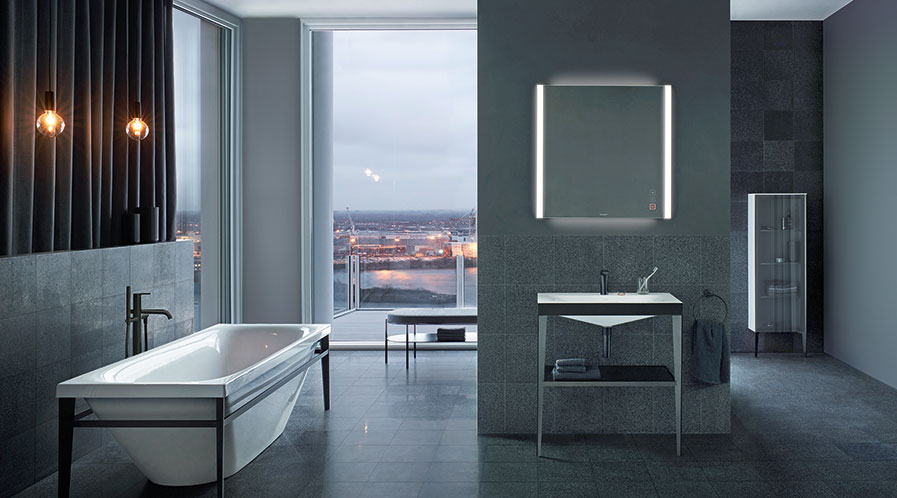Bathroom Trends For The Decade
Changing business circumstances, consumer lifestyles, and preferences along with advancements in technologies present us with some exciting new avenues. Washroom and Beyond tries to capture the product and design-centric trends, that will shape the washroom design in this decade, from the leaders of the industry.
We’ve seen a lot of changes in the bathroom space over the past decade, both in terms of aesthetics and functionality. From the time bathroom used to be tucked in a corner, to becoming an integral part of the rooms, it has indeed come a long way! Bathroom space has become much more than just an activity spot – it has evolved to become a personal space providing the user the much-needed ‘me-time’. This personalisation and wellness trend and other such changes in the lifestyle of the user are what have driven innovations in the product as well as design sphere. The influence of technological advancement has been quite evident.
The Covid-19 pandemic has been one of the biggest influencers shaping the bathroom products trends for this decade. While it has accelerated the adoption of the smart bathroom concept which was at the nascent stage before the pandemic struck, it has heightened consumer awareness of technology, wellness, and hygiene.
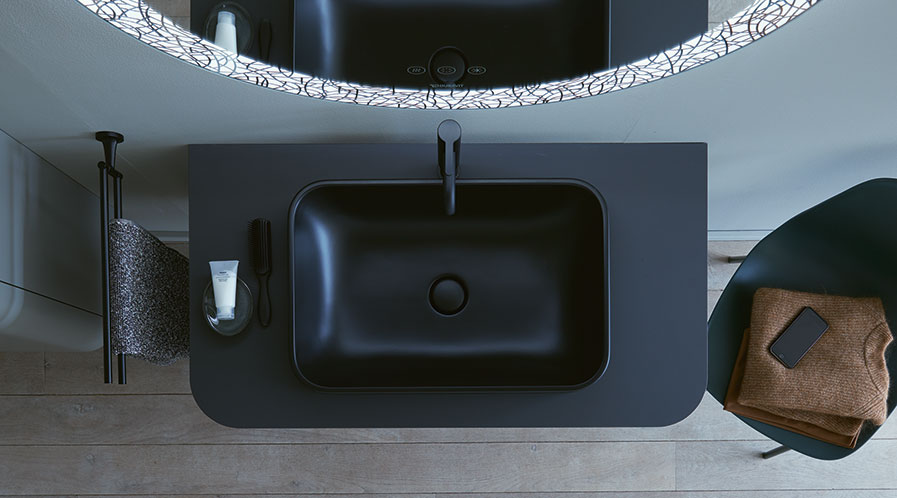
The Driving Factors
Experts highlight a significant shift in the preference of consumers, especially towards touchless technology in the bathroom. Also, a significant influx of sensor-based bathroom products in the market has been observed which has only become more popular with the arrival of the pandemic and the growing concern of the masses regarding hygiene and safety.
“As we move towards post covid world, and adapt to the new normal, there will be an evident increase in the emphasis on products that minimize the human touch like – Touchless sensor taps and EP2 Sensor-based Flush plate or products that effectively prevent germ buildup such as Anti-Microbial products like the Roca exclusive, Supralit seat covers,” shares KE Ranganathan, Managing Director, Roca Bathroom Products Pvt Ltd.
Asutosh Shah, Managing Director, Duravit India opines, “After the Covid19 pandemic, people have become more conscious about hygiene. Overall preferences have been changed for many users and among them, high hygiene standards, convenient technology, and of course a good design will be the key factors that will drive product innovation.”
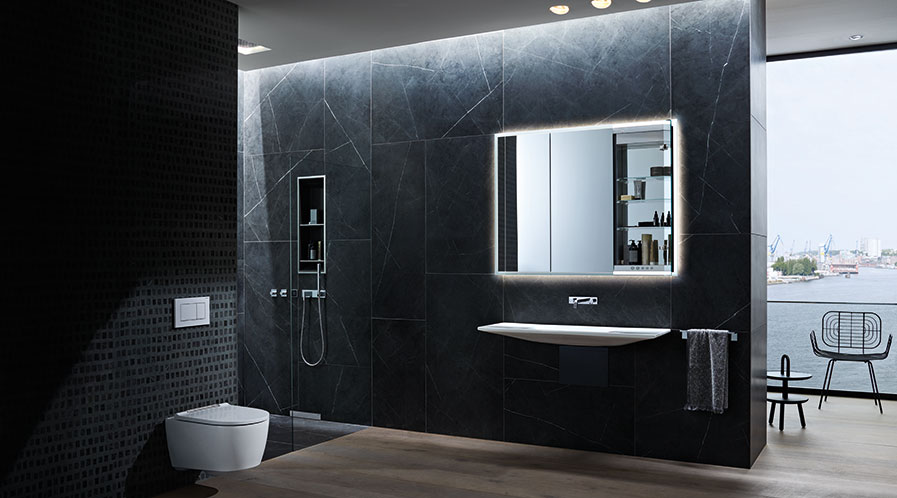
Photo Courtesy: Geberit
Additionally, individuals are now opting for stylish homes and modern bathrooms that are beyond functionality and have a wellness quotient attached to the space. The pandemic has certainly created inroads for innovative and smart technology irrespective of the size of the washroom.
According to Abubaker Koya, Managing Director, Geberit India, the homeowners’ propensities toward spa-like luxuries, smart innovation (Luxury, style, and cutting-edge technology) and demand for intelligent space management will drive the product innovation. “Furthermore, luxury will not be confined to expensive and stylish bathroom fixtures and designs alone, but increasingly is moving into the tech zone owing to the breakthroughs in AR (Augmented realty) and AI (Artificial intelligence).”
Highlighting the challenges of introducing cutting-edge technology in the Indian market, Bantwal Ramesh Baliga, CEO, Watertec India shares, “The challenge is to keep introducing products in cost-conscious markets that have always been subsided by cheaper products from other South Asian countries and China. The opportunity lies in tapping and manufacturing products that focus on health and hygiene as that is the need of the hour.”

Asutosh Shah
Managing Director, Duravit India
“We don’t think about the bathroom very often, but the fact is we spend a significant time of our life there. Every single day starts and ends here. It’s not just a place for wellness but well-being and that’s what drives us at Duravit to improve the everyday life of all of us.
Our design and research team studies how simple arrangements of a sink, mirror, toilet, and bathtub can upgrade your everyday. How does it improve the feeling of being more relaxed and how we can help people to feel better every day?
We evaluate the impact of design that adapts to people’s needs. The design lasts longer and the same time is highly functional. We work with a leading international designer network and with our expertise to predict the changing consumer preference and develop a required solution.”
Health And Hygiene in focus
In the aftermath of the Covid-19 pandemic breakout, which requires adequate social distancing and minimal human touch, technology-led products and solutions in bathroom space are much in demand. There is an increased emphasis on products that minimise the human touch and are equipped with sensor technology or products that effectively prevent germ build-up. While bathrooms have traditionally been functional and utilitarian spaces, the latest developments in technology are making bathing an even more luxurious experience. Individuals are opting for ultra-modern bathrooms that are beyond functionality, aesthetic in nature, and have a wellness quotient attached to their space.
The role of the bathroom is completely changed. Along with ease of operation, hygiene is going to be the most important trend in the coming years. “And, innovations like Hygieneglaze (Antibacterial glaze), improved flushing technology, automatic shower toilets, and much other comfort-enhancing technology will blossom,” shares Shah.
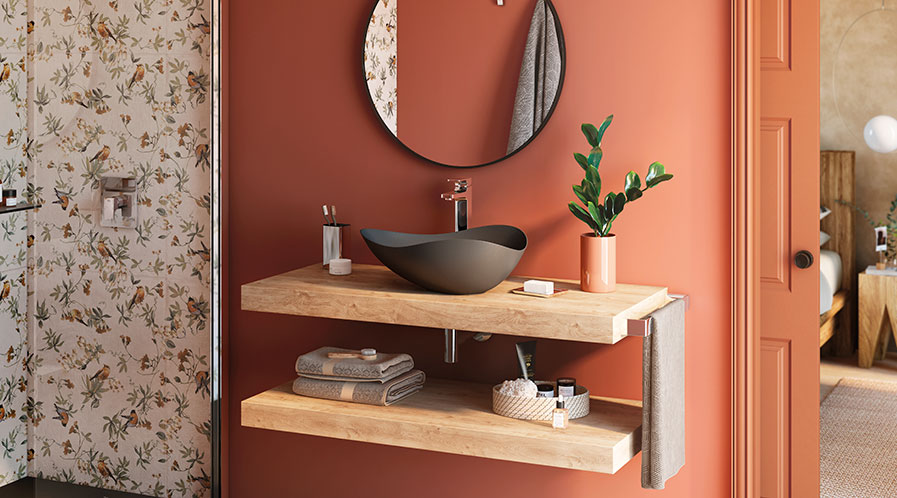
Echoing the same sentiment, Baliga stresses that this decade has seen a wide plethora of changes and more so in the antimicrobial finishes and materials apart from the technology-based advancements. For instance, our toilet seats have permanent antimicrobial agents incorporated into the toilet seat at the time of manufacturing and provide effective antimicrobial properties resisting the growth of a wide spectrum of odour-causing bacteria, fungi, molds, and mildew. This treatment is safe for people, and the environment and is effective for the life of the product.
He further shares, “Before Covid-19, the design community was seeing a lot of antimicrobial layers and coatings on products. We are now seeing a rise from facility managers and building owners requesting this option as an enhanced safety precaution for their clients.”
Today’s touchless handwashing models incorporate advanced sensing technology like infra-red wall-mounted taps and touchless flush controls on toilets for continuous and reliable washing. “Our Conti+ taps are completely hands-free, so it protects users against bacteria transfer. Germ buildup within the unit is prevented through the use of bacteriostatic materials and hygienic rinsing.”

Abubaker Koya
Managing Director, Geberit India
“Geberit has a long tradition of quality, reliability, and innovation. Since its beginnings in 1874, the company has helped to shape industry developments and is still setting trends in sanitary and piping technologies with its innovative system solutions.
This is made possible, because of more than 150 years of our Know-how, coupled with the insights gained by working in close collaboration with our key influencers and partners comprising plumbers, architects, consultants, trade fraternity, and last but not the least, our continuous investment in R&D.
The tech consumer’s appetite for ground-breaking bathroom products will be high and the top bathroom innovations that we anticipate, will be driven by digitalisation within the bathroom (apps for improved usage, hygiene, etc), and a few lifestyle ones as below:
- Face recognition system which automatically adjusts water temperature and pressure to the user’s personalised settings
- Height-adjustable sink, toilet (Geberit has already launched the WC in select markets as “Geberit One”), and mirror that moves up and down depending on who is using them
- Health monitoring from toilet devices”
Increased focus on sustainability
Sustainability will be one of the major factors that will impact any future innovation across industries. “Water conservation has become a major point of conversation and we are expecting the sentiment to continue growing amongst our consumer base. As the technology at home is a partner for hygiene and health, we have seen a significant shift in demand for energy-efficient and water-saving fixtures among customers as they are becoming considerate about water usage,” informs Ranganathan.
He further adds, “As a company that constantly drives innovation with sustainable technology, Roca makes optimum use of resources for better solutions without compromising on the design aspect. Cold start is an innovation designed for sustainability, with water and energy-saving capability and zero CO2 emissions. It allows one to use cold water as the default for daily bathroom rituals and allows users to switch to hot water when required. In addition to saving water, users will also be saving energy, as it prevents the boiler from rising up when not needed.”
Baliga reckons that sustainability will continue to be a major trend and the product innovation in that direction will do well. “Urinals consume large amounts of water in the form of flushing. Each flush could amount to litres of water being expended while not even standing up to high standards of cleanliness in the prevalent models of urinals. Watertec’s Urimat is equipped with innovative designs in urinal shapes that will be trendsetters in their own right and will go a long way in water conservation. The waterless urinals use liquid sealers and rely on density differential between the sealant and the liquid waste, thus eliminating the need for water entirely!”
Roca’s ‘In-Tank’ Concept, is a completely reimagined WC concept that requires no cistern to be attached to the WC or to be installed behind the wall. This feat is accomplished thanks to the sophisticated integrated tank design that the WC has. The bowl of the WC acts as a cistern and houses the water in it. “Also, Roca’s W+W is a state-of-the-art product that combines basin and toilet in one single piece. The basin of the W+W is integrated on the upper part of the tank of the toilet, allowing the reuse of the water we need to wash in the flush of the cistern,” informs Ranganathan.
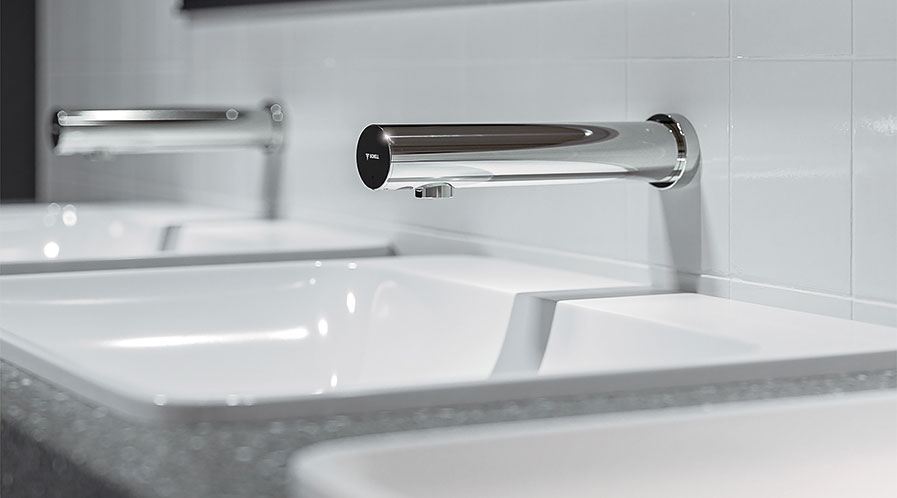
Personalisation and design-Oriented trends
Personalisation of washroom space and increased use of technology to enhance user comfort and well-being was a defining trend in the last decade. And, this further continues to gain momentum with the high-end consumer leaning toward designer products.
With the rising trend of designer bathroom spaces that showcases opulence and reflect one’s personality, Roca’s recently launched unique offering ‘Red Dot award-winning Ruy Ohtake Basins’ gained riveting traction amongst Indian consumers as this iconic collection boasts architectural styling and exclusive high-quality material. “The inspirational appeal of the range metamorphoses the bathroom into an oasis of subtle luxury and perfect functionality. In the coming decades, such premium products will help bring out a unique personality full of charisma by bringing life to every corner of one’s bathroom. Bringing innovation that blends perfectly with all kinds of bathroom spaces, Roca has also introduced square-shaped designs under its Debba collection, Gap collection for WCs and basins,” opines Ranganathan.
Bathroom getting brighter is a trend that many designers have forecasted earlier. As bathrooms are increasingly viewed as personal spaces for retreat and relaxation, colour trends are permeating this formerly purely functional zone and creating a more homely and inviting atmosphere. Interestingly, the colour is not limited to walls or the ceilings and the floors, even the WCs, bath-fittings, and accessories are getting colourful. In fact, this is a trend that was highlighted in ISH Frankfurt 2019.

Bantwal Ramesh Baliga
CEO, Watertec India
“Apart from the ever-changing demands of the consumers, our focus will be on sustainable sanitation and water conservation. At Watertec, we are committed to leveraging the best in technology to create innovations that can help build sustainable solutions in sanitation, which are effective as well as appealing to the modern population.
Further, through tech adoption, we aim to make products that are smarter and aspirational for the consumer, thus helping make water conservation a widely aspired and appreciated phenomenon. Our efforts,, at Watertec, are also to build dedicated consumer education platforms and touchpoints where we can actually teach them the appropriate use of our products while also educating them about the urgent need for water conservation. In a larger scheme of things, we hope to make our contribution, while making sanitation more suited to long-term sustainable goals.”
A number of exhibitors showcased products highlighting this trend. Gesa Hansen’s His & Hers collection for Villeroy & Boch uses bright colours to create individual flair and play with the concept of what might be considered typically male or female style. Dornbracht presented taps in pastel pink and mint green, while Italian manufacturers like Fir Italia and APM opted for gold and matt black. Alongside eye-catching fittings in bright on-trend colours and elegant matt metallics such as copper and rose gold, walls, and tiles are increasingly taking on a more colourful appearance too.
There is experimentation going on with the shapes of these products as well. A few new designs of fixtures different from the standard ones are organically shaped fixtures. These give a whole new look to the washroom style and can also be the stepping stone to modern futuristic washrooms.

K E Ranganathan
Managing Director, Roca Bathroom Products Pvt Ltd.
“The definition of hygiene is constantly evolving in public or private bathroom spaces carving differentiated consumer needs; hence it becomes crucial for bathroom manufacturers to provide innovative and technologically advanced solutions. At Roca, we work one step ahead to design products exclusively for consumers looking for stunning and breath-taking designs, offering a plethora of options to our customers that will feed their ever-evolving demands for aesthetically appealing bathrooms.
As a brand, we are constantly innovating, improving, and expanding our product base to cater to a wide consumer base. We are constantly observing and understanding global industry trends to bring that technology to our customers in India. Our research and development team are always hard at work to fine-tune our existing product portfolio and introduce new products. Further, we also reach out to our customers and take their feedback into consideration to better understand the need of the market. We have been and will continue to endeavour to provide all our customers with the best possible blend of form and function, keeping in mind the modern-day needs of individuals and encouraging them to opt for innovative and cutting-edge bathroom fittings.”
Proliferation of smart technologies
Among urban consumers, smart homes are increasingly becoming popular by the day as fewer and fewer people want to devote their time to mundane chores when they’d much rather invest it in building their careers or pursuing their hobbies. The market for smart home gadgets is booming worldwide and India makes no exception. Convenience is a big part of the appeal of smart home tech.
Koya adds, “The adoption of smart washroom products has gained more popularity and acceptance from a hygiene perspective especially the sensor products and solutions during these COVID times, more so in public and semi-public washroom space.”
With the advent of customizable toilet functions, a furniture unit that can be connected to the mobile phone or a mirror with touchless technology, individuals are choosing from a whole array of shapes, finishes, and textures, to an extra-added safety feature. And, all of those have seen an increase in demand. Moving forward, the touchless innovative solutions are going to open a door filled with new opportunities for the industry to grow.
Talking about smart touchless cisterns, Baliga adds, “One can now upgrade their toilet to a smart cistern with a hygienic sensor-activated dual flush from Watertec’s Oli range of touchless cisterns. The elegantly finished flush plates fitted on the walls get activated by a simple wave of a hand while the user can choose a half or a full flush. Consumers also have the option to choose a manual flush too.”
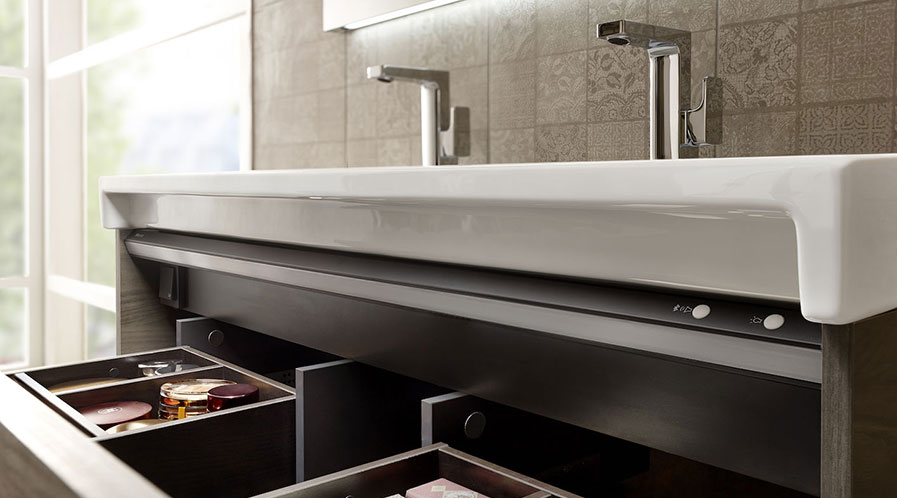
In order to enhance the bathroom experience and make it futuristic, Roca’s IOT based smart shower can be used by just a simple gesture through which one can adjust, modify or stop the water flow and continue enjoying the water with the perfect temperature. Now even furniture units can be one of the elements that add comfort to the bathroom space with inbuilt Bluetooth connectivity speakers, power outlets, and internal lighting. “Decorative and innovative sensor-based mirrors with in-built LED lights are essential pieces in the bathroom space to provide maximum comfort and adapt to the new demands to avoid hand contact. Consumers are also switching to sensor-based automatic taps and faucets for making hand-washing more hygienic, preventing the transmission of microorganisms, and maximising hygiene at home,” shares Ranganathan.

CV Dilipkumar
Managing Director, Schell India
“Schell’s motto has always been responsible for health and sustainability. Hence, our innovation is always driven to achieve this. Amidst the pandemic and changing scenarios, the majority of consumers are willing to switch to sensor/contact-free products, which were already in our product portfolio. We have a very good range of products in the sensor and green building norms compliant category. Some innovative products of Schell are the exposed WC flush valve, sensor urinals, and sensor faucets to name a few.
With hygiene becoming more important to consumers, we foresee the adoption of smart washrooms products becoming a norm; the contact-free product is the way forward. Schell globally is now focusing on eSchell through which the user can control the fittings which will result in further saving of water and energy.”
Smart mirrors are one of the major game-changers in futuristic washrooms. While doing simple tasks like brushing teeth or drying hair, one can read the news, check the weather or even go through emails at the same time.
As the world becomes ever more digitalised, innovative products that enhance the user’s comfort will find their way into the bathroom. “However, the product must combine technology, functionality, and design in a meaningful way. Products with easy automation and options for operating from a smartphone will be more popular in the coming years. Also, new-age consumers have started taking interest in the features like auto flush and new flushing technologies,” opines Shah.
The adoption of home automation solutions that are fast rising in high-end construction is arriving in the washroom much faster than before. Indeed, for the new age consumer, it’s exciting times ahead!
Tags: Bathroom Design, Bathroom Trends, Duravit, Geberit, Roca, Schell, Watertec



